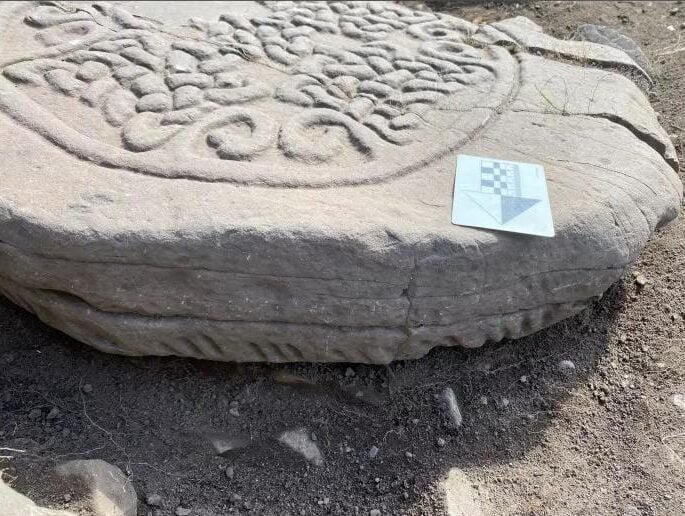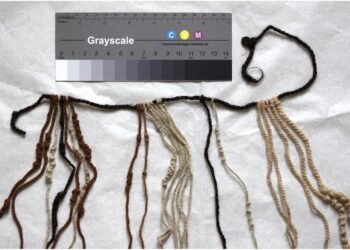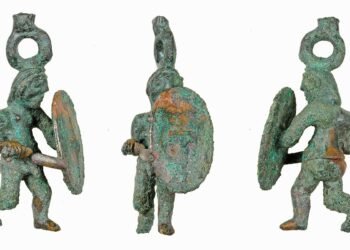A 1,500-year-old carved stone from the ‘Painted People’ in a Scottish cemetery possibly reveals a bull, pelicans, and an ancient alphabet script. The stone, unearthed last month in a small cemetery, dates to between CE 500 and 700.

The Picts, or”Painted People,” were so-named by Roman historians for their supposed war paint and tattoos (“picti,” is the Latin word for”paint”).
During the early medieval period, they lived in northern and eastern Scotland. The Picts, who were most likely descended from Celtic tribes, are well-known for successfully resisting Roman conquest. While the Romans regarded the Picts as barbarous and backward, they were mostly subsistence farmers who grew grain and herded domesticated animals.
Historians generally agree that shortly after the Picts sent the Romans out of Scotland in the late 5th century, in 685 AD, they drove out the remaining Britons (at the Battle of Dun Nechtain). They are thought to have consolidated and defended their mini-empire until Vikings took hold of the northeast at the beginning of the 10th century.
However, the discovery of a cross slab in a region that was a buffer zone between the Picts and the Romans, and later the Britons, complicates that tidy history.
Measuring 119 centimeters (47 inches) high and 82 centimeters (32 inches) wide, the Old Kilmadock stone is similar in size and shape to a large burial marker. Experts believe they may have served multiple functions. The item has a rounded top, animal decorations, and an Ogham script strip (a medieval alphabet).
“The cross slab is the first one in this region, and may mean that the residents started to think of themselves as Picts,” Murray Cook, a Stirling Council archaeologist who led the excavation, told Live Science via email.
Kelly Kilpatrick, a historian and Celticist at the University of Glasgow, told Live Science in an email that cross slabs “could be grave markers, and used to communicate Christian messages to a lay audience through imagery. Sometimes you find iconography from native Pictish religion intermixed with Christian iconography on these types of monuments.” But its rounded top and circular, knotted cross make the Old Kilmadock stone a rare type of Pictish cross slab.
“This discovery shows the value of archaeological investigation of early church sites in Scotland,” Maldonado said, “too few of which have been excavated. It is a huge win for community-led research, providing value both for local heritage and internationally.”
The recently discovered stone stands testimony to transitional times in Scottish history when ancient Pictish symbols were given new Christian interpretations.
The recently found stone stands testimony to transitional times in Scottish history when ancient Pictish symbols were given new Christian interpretations. The stone most likely survived because it was used to cover graves in the Old Kilmadock cemetery much later.























